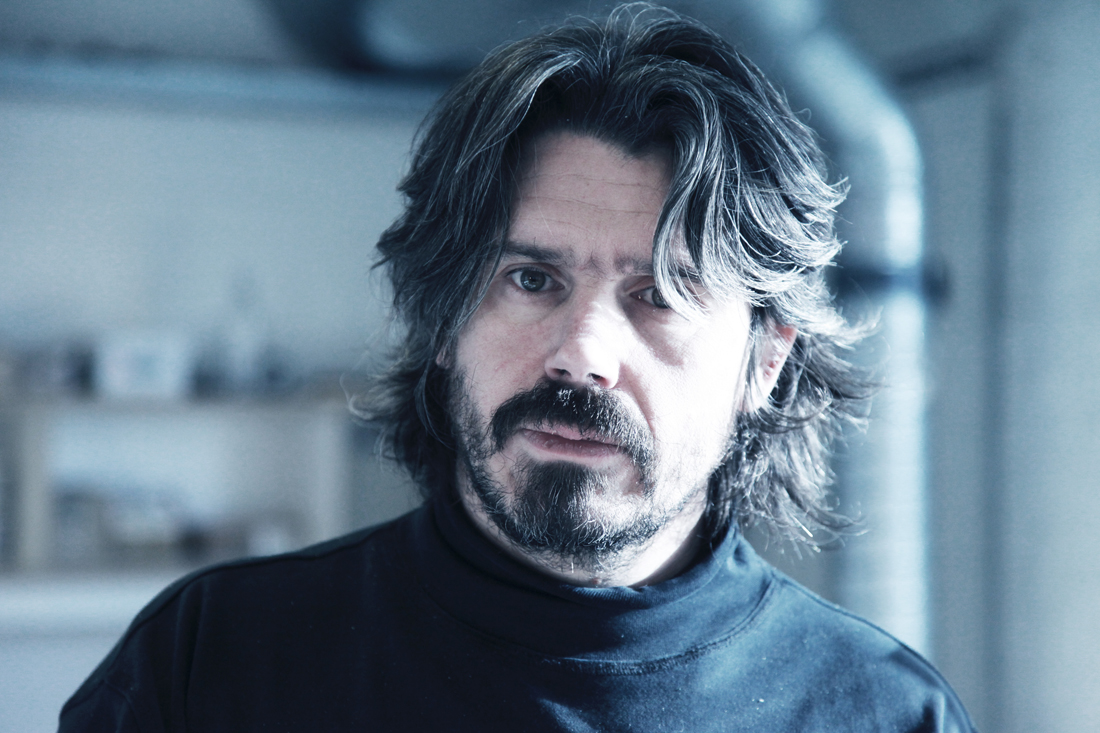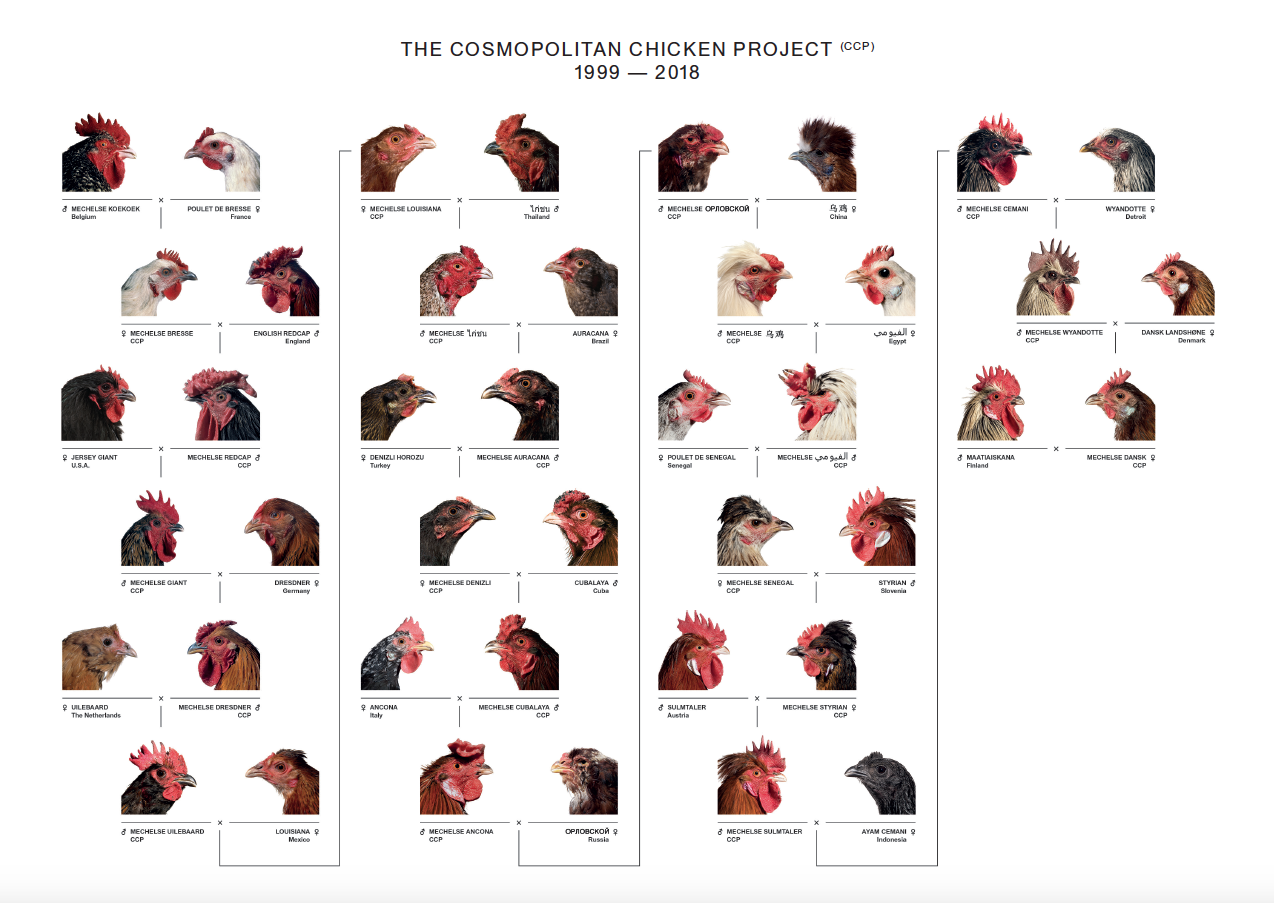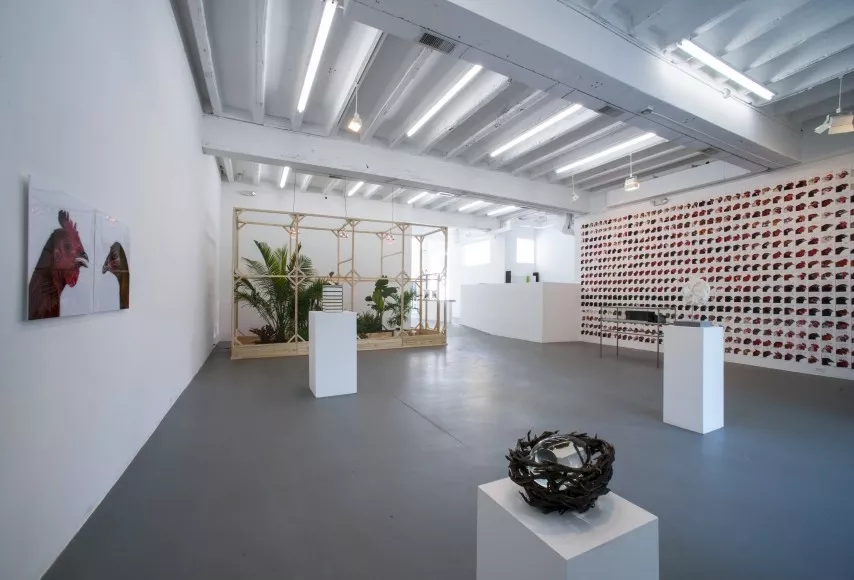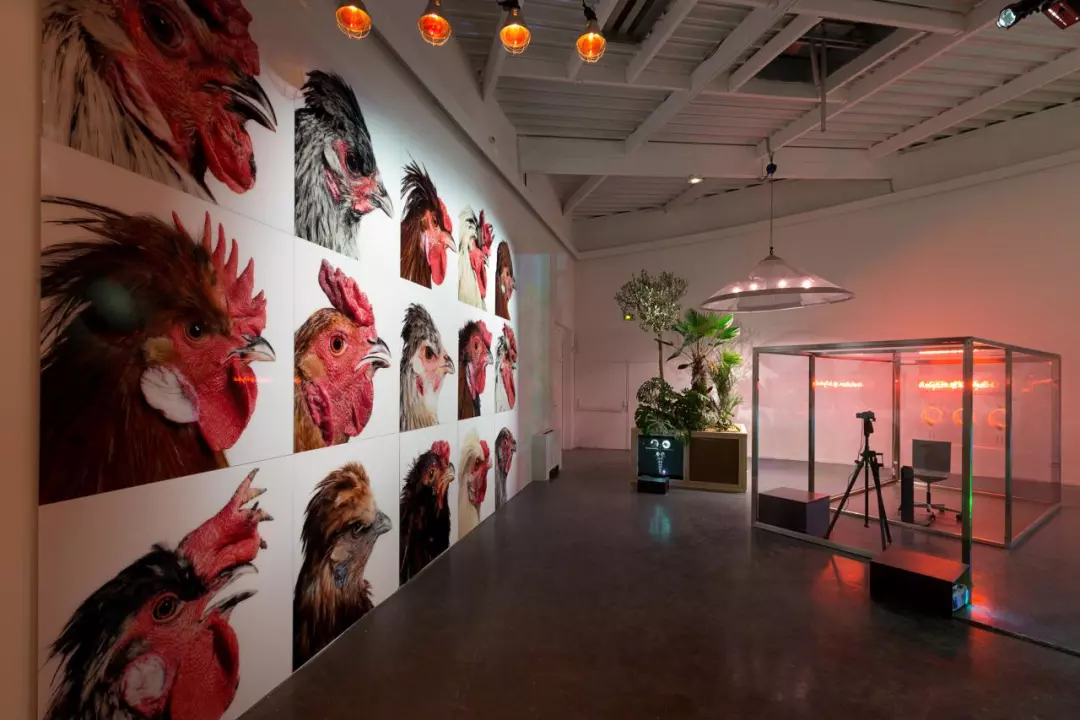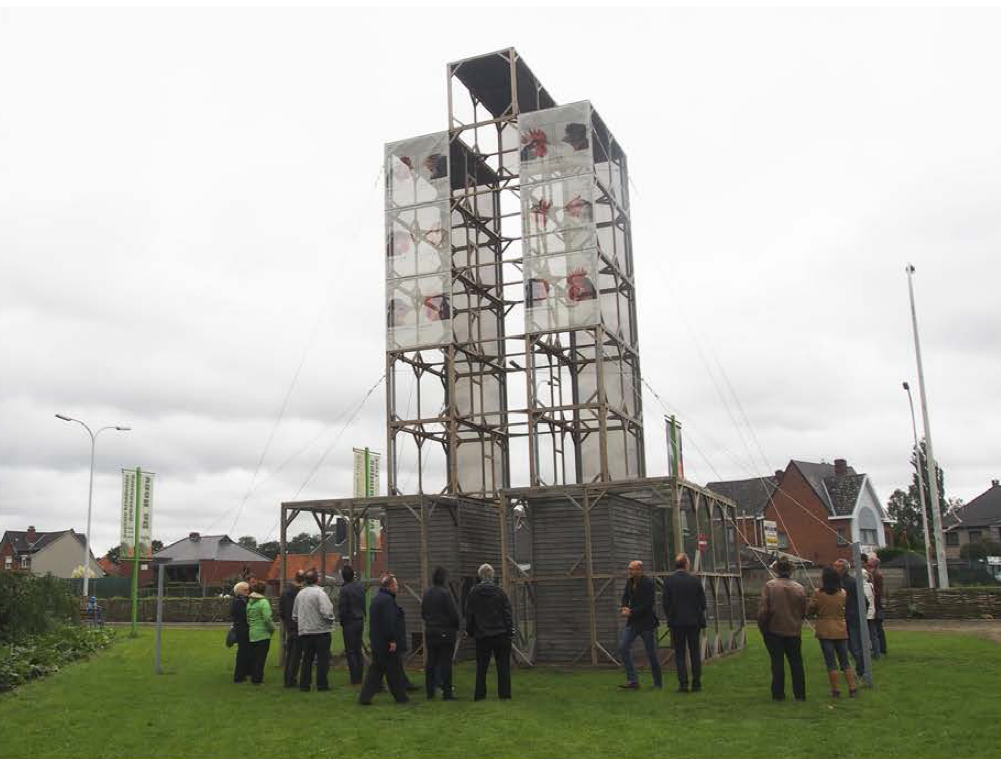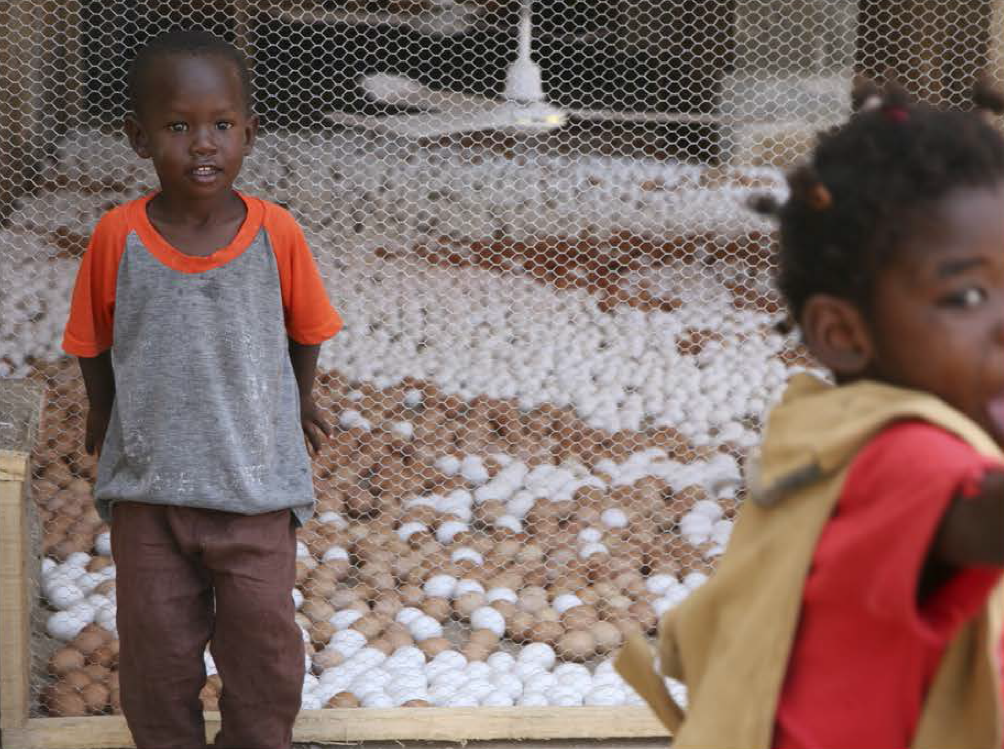COSMOPOLITAN CHICKEN PROJECT
C-PLATFORM × Koen Vanmechelen
Project Description
The CCP has created crossbreeds that defy expectations. The Cosmopolitan Chicken Research Project (CC®P) studies them and confirmed Vanmechelen’s assumptions of the genetic enrichment through crossbreeding. Over the years, Vanmechelen’s hybrids have shown to be more resilient, live longer, be less susceptible to diseases, and exhibit less aggressive behaviour than their parental flock, making a clear case for the importance of genetic diversity.
For his installation Arena de Evolución Koen Vanmechelen organized talks with an international group of scientists during the Havana Biennial in 2015. This led to the insight that the diversity of the Cosmopolitan Chicken must be returned to the local, often vulnerable, communities who are at the origin of the many breeds of chicken. Combining the global and the local, crossing diversity with productivity, enables a new, sustainable evolution. That is the Planetary Community Chicken, or PCC.
Every PCC-generation is a cross between the latest generation of Cosmopolitan roosters and local, commercial hens. These chickens absorb the genetic pool of the CCP rooster and produce vital community chickens who can provide the communities it lives in with healthy eggs. The time is now.
The pressure to feed the world is only increasing. Livestock ability to cope with climate change, the security of food supplies is threatened by many factors, resilience to new diseases, and adaptability to harsh conditions become increasingly important. Maintaining and enhancing diversity will be critical to ensure adaptation potential in times of uncertainty. Nevertheless, in reality, diversity goals typically compete poorly against priorities of productivity, short term efficiency and cultural acceptability, resulting in a continuous cycle of genetic erosion. Current breeding systems, where species are deprived of natural selection processes, have resulted in species that are highly susceptible to disease, having lost their genetic resistance and ability to adapt. Developing the idea of food system resilience and consider how this could be implemented through stakeholder participation to ensure food security for everyone, Resilience is conceptualized from a holistic perspective, as encompassing the complexity of whole food systems, including social, economic and biophysical processes operating at many scales. It presents the opportunity to eradicate weaknesses and build capacities in the food system while dealing with future uncertainty. (Credits to Food system relicense: Defining the concept)
Even in richer countries the sudden halt of food supplies through calamities, wars, riots or climate change can lead to much misery. The need for food security and food independency of traditional industrial supply has played a pivotal role in the growing resurgence of small-scale agriculture, from raising homegrown vegetables to homebred animals.
Every new crossbreed hatches in galleries and museums, spaces which invite public dialogue.
Experimental labs are currently based in Belgium, Harare (Zimbabwe), and Addis Ababa (Ethiopia). The animals bring new diversity and food security to different urban communities. With this project, Vanmechelen takes the next step in positioning art categorically where it belongs: in the middle of society, engaged with people, always committed.
Serving as a metaphor for humanity and our relationship with the biological and cultural diversity of the earth, Vanmechelen’s work fits comfortably alongside that of Chido Govera – a Zimbabwean social entrepreneur and activist who he worked closely with to develop an ecosystem of chickens and mushrooms in which mushrooms are fed to chickens and the chicken waste is used to fertilise mushrooms. Called the Mushroom, Egg, Chicken, Camelids project (or MECC), it explores whether substances from one organism can migrate to the organism of another species.
“The beauty of the project is that it is about freedom,” Vanmechelen says. “If a chicken from Belgium breeds with one from France, the result is completely free. We are not selecting them for the best genetics and we are not inseminating them. We give them freedom in breeding. It is the opposite of trying to create an überchicken. It is about open genetics and you don’t know if the result will be brilliant or not. It is a metaphor for human existence and about freedom.”
Related Information
The Belgian artist Koen Vanmechelen is an internationally acclaimed conceptual artist. His work explores the importance of bio-cultural diversity, identity and community. He is best known for his Cosmopolitan Chicken Project (CCP) in which he cross-breeds domesticated chickens from different countries as an allegorical and aesthetic statement about the way in which diversity can shape the global cultural and genetic mix. The artist’s scientific collaborations around the project have earned him numerous awards including the Golden Nica Hybrid Art award in 2013. Vanmechelen has presented his work on almost every continent and is a regular contributor to the Venice Biennale. From spring 2018, his headquarters is at LABIOMISTA, meaning literally, mix of life, a former public zoo in the city of Genk that Vanmechelen is transforming into a living laboratory where culture, nature and humanity find a new more sustainable balance.
Planetary Community Chicken at De Hoev (BE), 2016
Cosmopolitan Chicken Project, Dakart, Biennial of Senegal, 2010
Date
2018年12月18日
Category
Future Institute

